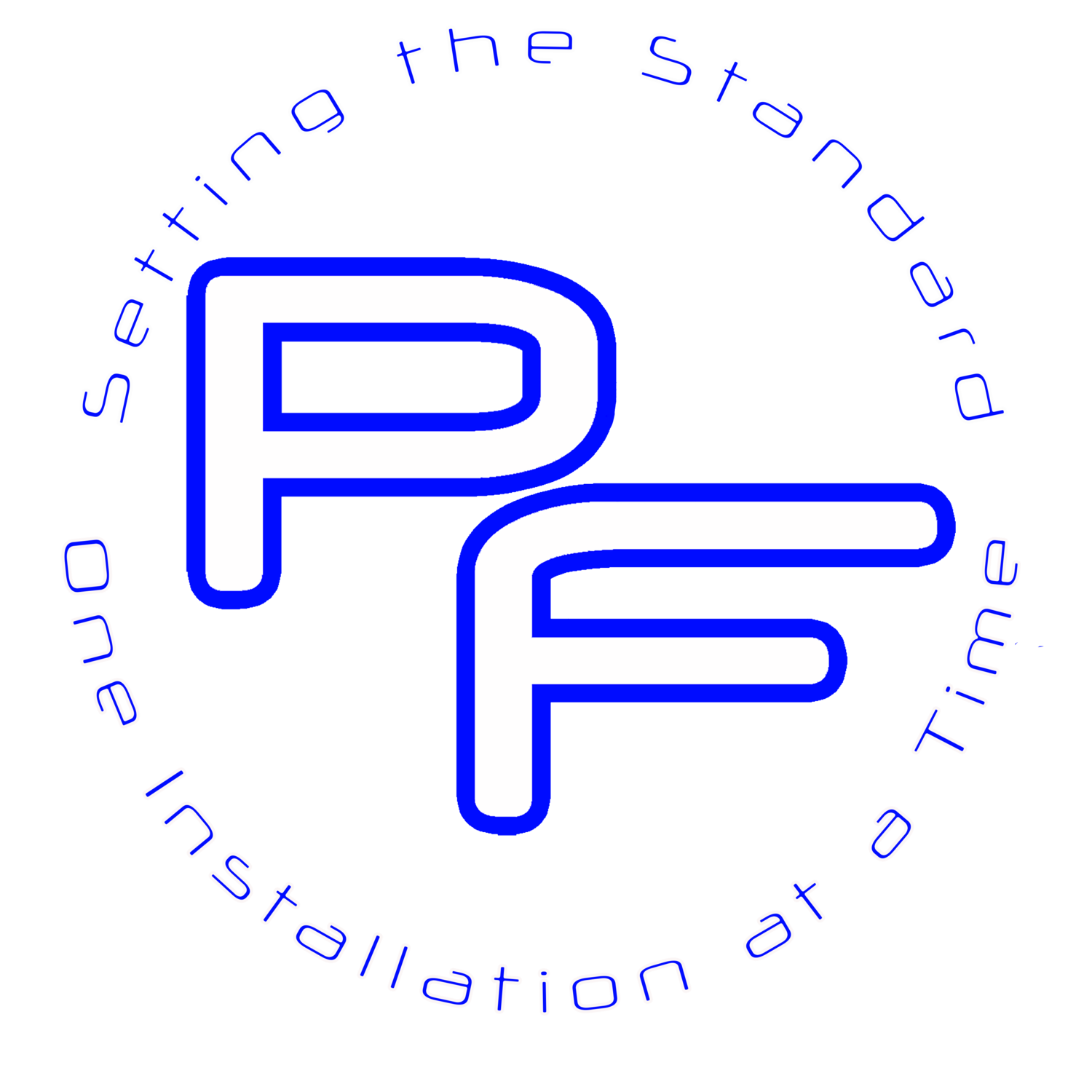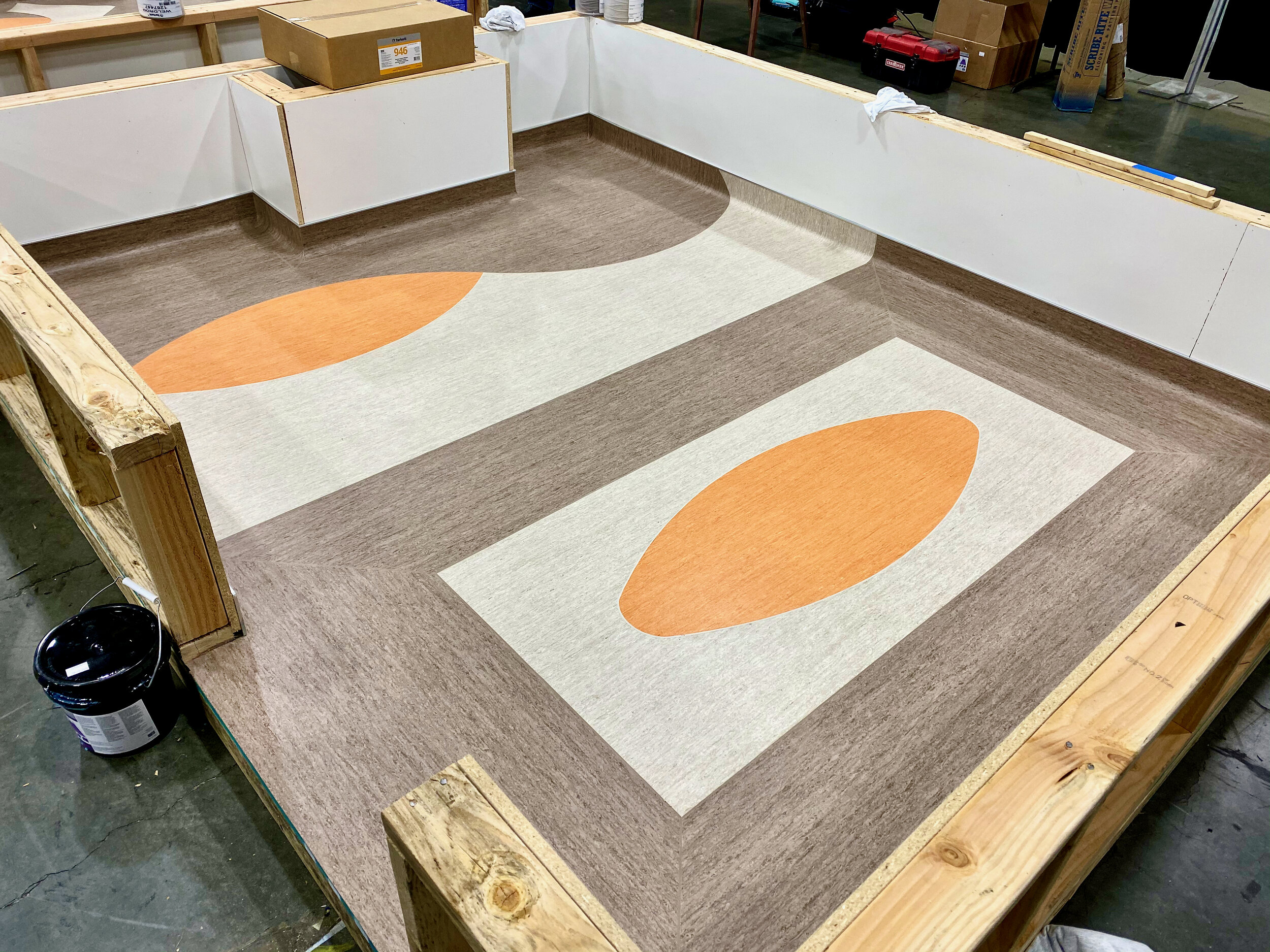Why should you use a certified flooring installer?
Homeowners and business owners need to know more about certified flooring installers because it can help them make better informed decisions about their flooring projects. A certified installer has completed a specific training program, passed a test, and has proven their knowledge and skills in the that specific section of the industry. This means they have a higher level of expertise and experience than a non-certified installer, which can provide several benefits.
First, certified installers have the knowledge and skills to properly install the flooring materials in which they were certified, which can help to prolong the life of the flooring and avoid any potential issues. This can save homeowners and business owners money in the long run, as they will not have to replace the flooring as frequently.
Second, certified installers are familiar with the latest industry standards and best practices, such as proper installation techniques, safety regulations, and product specifications. This knowledge can help to ensure that the installation is done correctly, safely, and to industry standards, which can provide peace of mind for homeowners and business owners alike.
Certified Flooring Installers - Carpet Certification - Dave Garden Instructing
Third, certified installers are aware of the latest trends in flooring and can provide valuable insights and advice on the best options for your specific project, be it design, durability, or budget. This can help homeowners and business owners to make informed decisions about their flooring projects and choose the best options for their specific needs and budgets.
Lastly, it's important to note that certified installers will have insurance and licenses to protect the customer in case of any damage or accident during the installation process.
National Academy of Floorcovering Technicians - Heat Weld and Flash Cove Training - Mike Pigeon Instructing
Education also plays an important role in the flooring industry. A flooring installer with a higher level of education and training will have a deeper understanding of the products, installation techniques, and industry standards. This knowledge can help them to make informed decisions, provide better customer service, and complete installations that meet or exceed industry standards.
The HUDDLE is where the flooring industry can get together and talk about everything! Lead by Paul Stuart from Go Carerra who is joined by Daniel and Jose Gonzalez from Preferred Flooring.
Forward Progress Scholarship
There are many times when talking with installation professionals that the cost of going to a certification plays a huge roll in why they don’t try to obtain them. Not only do you have to take the time off from installing projects, you have to pay for the travel, hotels and the class itself. It adds up!
That’s why Go Carerra has announced the Forward Progress Scholarship!
Go Carrera has partnered with the FCICA to create the Forward Progress Scholarship, giving installers the opportunity to apply to attend FCICA’s CIM Program or their 3-days-to-CIM Program.
The CIM (Certified Installation Manager) Program sets the industry standard for those who manage commercial flooring installation projects. The program is a series of learning modules that are followed by assessments to accurately determine that the participant is retaining the knowledge they are learning. Once all modules and assessments are completed and passed, the participant will be awarded with the CIM Certification. The CIM Program is also available to claim in the Go Carrera app to display your accomplishments & increase your Hammer Rating.
The application will open on November 7th, and will close on December 15th. The winner will be chosen and announced on The Huddle Podcast, as well as on Go Carrera and FCICA’s social media and websites on January 10th. Click here to apply for the Forward Progress Scholarship.
Create your FREE Installer profile at https://gocarrera.com and become part of the future of the industry TODAY!
TISE 2020
The International Surfaces Event 2020 was held at the Mandalay Bay Convention Center in Las Vegas, NV last week and IT. WAS. AMAZING!
This was our first time out to the show and we went as a group. Larry from Apex flooring was the only one who has been out previously and he was an AMAZING help throughout the event, we couldn’t be more thankful for him and showing us around.
We started the week off by getting registered right away and trying to get some sneak peeks into the show. Guess what? They weren’t having any of that and security SHUT IT DOWN!
We then decided it was time to walk around Vegas like tourists since the Education didn’t start until Monday morning, while the Show didn’t start until Tuesday.
Monday we all hit the ground running with some CONVERGE sessions. The education aspect of the show is amazing and there’s TONS of useful information discussed. So much so that it was a little difficult to choose which sessions to go to.
Then there's SO MUCH to say about the NETWORKING!!!!!! Emerging Professionals, Flooring Installers of America, CFI, and of course all of the amazing vendors. There was so much to see, and so much to do. Even if you only spoke to someone briefly, the knowledge and passion at this convention makes you want to return and make it an annual thing. It lights a fire under you knowing that there’s so many other people out there with the same passion for floor covering.
AND last but not least . . . . The National Installer of the Year Competition. It is VERY humbling to install in front of the entire convention with some AMAZING installers. It doesn’t matter if you won or lost in the competition, these guys were in it to win it. The 2 days were a challenge and we worked every minute they gave us. It was a GREAT experience and I recommend you to give it a shot sometime! Make sure you keep an eye out to see when the entries need to be submitted.
If you were ever on the fence about going to this event and if it was worth it . . . . . Do yourself a favor and go. We will see you there!
A HUGE Shout out to the supporters. Jose Gonzalez, the face of Preferred Flooring - If it weren’t for you I wouldn’t have given flooring a chance and I definitely wouldn’t be as good as I am now without your knowledge and expertise. Larry Melton with Apex Flooring, you talked this event up to us to the point we wanted to go more than you, we love being your partner and friend. Dirk O’Brien with Custom Floor Crafters, you’re always there when we have a question and always willing to help us out. My wife Tanya for being my biggest fan and having so much confidence you told everyone I was going to win before I even got accepted. CFI, ProInstaller Magazine and TISE for putting together a great show and a great competition. All the other competitors for becoming great friends and all the judges for taking the time to critique every minute we were in those boxes. Last but not least - Check out some of these Partners . . .
Price < Value
At Preferred Flooring MI LLC we pride ourselves in technical service and installation to the specifications of the manufacturer. The end consumer shouldn’t have to deal with the countless failures of some of the installation teams who cut corners and the stores that throw these low numbers out should think of them instead of the profitability of using these unqualified installation teams.
val·ue
/ˈvalyo͞o/
noun
1. regard that something is held to deserve; the importance, worth, or usefulness of something.
"your support is of great value"
2. a person's principles or standards of behavior; one's judgment of what is important in life.
"they internalize their parents' rules and values"
verb
1. estimate the monetary worth of (something).
"his estate was valued at $45,000"
2. consider (someone or something) to be important or beneficial; have a high opinion of.
"she had come to value her privacy and independence"
price
/prīs/
noun
the amount of money expected, required, or given in payment for something.
"land could be sold for a high price"an unwelcome experience, event, or action involved as a condition of achieving a desired end.
"the price of their success was an entire day spent in discussion"verb
1. decide the amount required as payment for (something offered for sale).
"the watches in this range are priced at $14.50"
In 20 years one of most difficult things to do in the commercial flooring industry has been to get customers to distinguish the difference between price and value.
The distinction between price and value can be seen as price is arbitrary, while value is fundamental.
Price is the cost a customer pays to obtain your product and services.
Value refers to the perception of benefits received for what someone pays. In many cases, not only will the customer look at the price of the product/installation, they have to weigh factors such as removing the old product or having to close down operations while installation takes place.
Buckled Carpet Tile in a hallway due to a couple reasons.
1. Scraping of existing adhesive was not done prior to new adhesive going down
2. New adhesive was not troweled on properly
In such a saturated market, how can you get people to understand that not everyone offers the same Value when it comes to flooring installation? Do they view every flooring company as being the same?
In the commercial bid world I think it comes as a surprise to many Site superintendents the people who actually show up on their job. Bid houses are constantly working on volume, pricing the installations as low as possible and then going down the list of trade contractors finding the person/company who will do it for the pricing they have. Sometimes giving it to non qualified installers because there’s no way they would give up any of the profit they have built in. Who suffers in this situation? THE FINAL CUSTOMER. The one who is paying to get their flooring done/replaced. Sometimes the final installation looks good, but what about what’s UNDERNEATH?
When existing adhesive it not removed, the new adhesive only touches the new product where the highest ridges are. The result is a floor that is not to manufacturer specifications and the warranty is void.
Many times looking at a project you can’t tell that steps were skipped and the install isn’t up to industry standards. By hiring the lowest bidder, you sometimes lose value in what matters most to some customers, the warranty. I was out at a job recently where there was no moisture testing done. They had drain tile put in and everyone thought that was a solution to the moisture issues that were going on. The reading came back at 100% RH and the LVP was curling up on the edges. It’s skipping steps like these, that end up costing the end consumer (not necessarily in price, but definitely time) in the long run. The VALUE of a moisture test before the start of a job would have had a mitigation system in place and an install that would have lasted. Now, after many attempts to “fix” the issue, the flooring is going to have to have an entire replacement AND have a mitigation system put in place before that happens.
As a consumer you have to weigh the benefits brought by the sales and installation team against the cost of the finished product. Can you afford to close again if the installation fails? Can you afford to have half the life of the product because steps were skipped during the installation?
The higher price up front with the peace of mind knowing you’ll have residual value over the life of the product in my opinion is well worth it in my opinion. But your own opinion may differ. Some people think that the best value is something they can get for the cheapest price, and that’s why the market is the way it is and that’s why our industry has notorious low ballers who hire anyone who claims they know what they’re doing.
At Preferred Flooring MI LLC we pride ourselves in technical service and installation to the specifications of the manufacturer. The end consumer shouldn’t have to deal with the countless failures of some of the installation teams who cut corners and the stores that throw these low numbers out should think of them instead of the profitability of using these unqualified installation teams.
Feel free to comment below.
For direct questions or comments email daniel@preferredflooringmi.com
We NEED Change!
I’ve been in the industry for 20 years and I tell young kids DO NOT GET INTO THIS INDUSTRY . . . Why? Because the flooring installation industry is lacking. We are a hardworking group that doesn’t get compensated for all the abuse we put ourselves through. Flooring is TOUGH on your body, to the point a lot of other tradesman have told me that they couldn’t imagine having to do this full time. Not only is it super hard on the body, where are the compensation and benefits like other trades? Flooring doesn’t require schooling or certifications so that means we’re not worth as much? Give me a break. The people who actually take their time to educate themselves are constantly underbid by someone who is looking to cut a corner to make a quick buck.
We. Need. Change!
I was once told that I wasn’t liked by one of the flooring stores because I am “Trying to change the industry” and they thought it was an insult. This is one of the best compliments I’ve ever had, and I hope one day our name sticks out as one of the few who actually help the industry. What kind of change is needed? LOTS. Let’s just start out with the basics.
Most of the flooring contractors around the area subcontract their labor out. By doing so they avoid the costly expenses of having employees. Does it work? The short answer, not all the time. The government has processes in place that need to be followed and I see far too many “independent contractors” working for just one contractor. The problem here is that they SHOULD be considered an employee.
The second step in this is that the “independent contractor” then hires his own guys and pays them on a 1099 as a, you guessed it, another 1099 “independent contractor” doing work for just that one person.
This is where people get all butthurt when I call them out and say “it’s legal, it’s how we’ve always done it”
We have to pull it together and realize that it’s not how it should be. I started as a 1099 “employee” when I was 12 years old. The problem with this is that most people DO think that it’s ok. It’s time to educate these people. This is one of the biggest problems that I see and it’s because this leads people to not pay their fair share of taxes. When they don’t pay their taxes they don’t have to “worry” about raising their prices because well, they’re not paying their taxes.
There’s far too many flooring business owners who are GREAT at flooring installation, but lack the business knowledge to run it. This is one of the main reasons we lack the benefits other trades have. When you can’t even classify employees right, how is it possible to establish a benefits package? How can we as an industry compete and get new young talent, when a factory can start someone out at $14-$16 an hour and have a benefits package of paid vacation, retirement, health, dental and life insurance right from the start? We. NEED. Change!
Look. We are ALL in this together, and without us all doing SOMETHING we aren’t going to be able to attract the talent to lead the flooring installation industry in the future. Just. Do. SOMETHING.
Start out small. Do you have guys who should be employees but you pay them on a 1099? Switch them over to a w2. Why? It’s the right thing to do.
Do you already pay your employees on a w2? Look into what benefits you can offer to them, maybe start with a paid vacation?
We all need to come together and push for the future, because times are changing and it’s time for us to adapt. Raise your prices, pay your taxes, and pay your guys the way they should be paid. Let’s start making a change!
Feel free to comment below.
For direct questions or comments email daniel@preferredflooringmi.com
Classification of Workers
Are you classifying your workers the correct way?
Now this may be a sore subject for a lot of the trade contractors out there. I have seen MANY people argue that the way they classify their workers as independent contractors, and not employees is correct. Their argument? It's the way they've always done it. As in the installation world, just because it's the way you've always done it, doesn't mean it's the correct way!
Over the past few years the IRS has implemented a set of rules to help employers classify their workforce. There are three main categories when looking at whether a worker is an independent contractor or an employee.
1. Behavioral: Does the employer have the control over how and what the worker does their job?
2. Financial: Are the business aspects of the worker’s job controlled by the payer? (these include things like how worker is paid, whether expenses are reimbursed, who provides tools/supplies, etc.)
3. Type of Relationship: Are there written contracts or employee type benefits (i.e. pension, insurance, vacation pay, holiday pay, etc.)? Will the relationship continue and is the work performed a key aspect of the business?
Businesses have to look into all three aspects and make a determination as to classify their worker as either an independent contractor or employee. Although the worker may fit into a different category in either of the three categories, it's important to take all of it into consideration, especially the extent of businesses right to control or direct the person when you make a final decision as how to classify.
If you're still unsure of how to classify a worker, the IRS has a form you can fill out here. This form can be filled out by either party (the business, or worker) and may take up to 6 months for the IRS to make a final determination for the worker. Workers who believe they've been misclassified can also file form 8919 to figure and report the employee’s share of uncollected Social Security and Medicare taxes due on their compensation.
Misclassification of an employee can lead to being liable for the taxes of that employee. The first line of Internal Revenue Code section 3509 states :
- When an employer erroneously treats an employee as a non-employee and does not withhold federal employment taxes, the employer is liable under IRC 3102 and IRC 3403 for the employee's share of social security and Medicare tax and the employee's income tax withholding.
There are some relief efforts made by the IRS as well. Section 530 can relieve you of having to pay the workers employment taxes If you have a reasonable basis for not treating a worker as an employee (you must not have paid anyone else in a similar position as an employee in order to qualify). There also the Voluntary Classification Settlement Program (VCSP) that provides the opportunity to reclassify workers as employees for future tax periods with partial relief from federal employment taxes.
In the flooring industry we are surrounded by companies who misclassify workers. Labor companies who try and "make it right" by purchasing their workers insurance policies. A group of individuals working together day in/day out led by a single person but are somehow "independent" from one another. These cases also play into the fact that a lot of these people also do not file their taxes. Why? They owe a bunch of money at the end of the year, taxes that should have been throughout the year, but was never accounted for, so they skip filing altogether.
Workers deserve the protections of being an employee when the circumstances are there. They shouldn't be liable for the employers portion of their taxes, social security and medicare. If you think as a business owner you're saving money by not having to pay for workers comp insurance, bad news, you're still liable because the worker is misclassified and should have been an employee all along. So if you have workers who should be employees, do your part, use the governments relief efforts and reclassify those "independent contractors" as employees, they deserve it!
Feel free to comment below.
For direct questions or comments email daniel@preferredflooringmi.com
Prevailing Wage
While Michigan is in the process of verifying signatures from a petition to repeal prevailing wage, I thought it would be appropriate to give our side of the story.
Before starting our business, my brother and I worked for a local shop. We had been in a handful of prevailing wage projects and always heard the office staff talking about how burdensome it was on the company. Although it was GREAT as an employee, we were soon to learn the other side and why it isn’t so great.
“The Prevailing Wage law also allows for safety and training programs that are rigorous and hands-on. With prevailing wage in place, Michigan’s skilled tradespeople can safely build the vital infrastructure our state needs with craftsmanship and quality.”
- http://www.michiganprevails.com/
While many pro prevailing wage advocates ensure that it allows for training programs that are “rigorous and hands on”, I have not set foot on one of these programs. I have been in the flooring industry for 18 years and have set foot on many prevailing wage job sites and not once was a training program even offered. I’ve been on many where we did not even have a safety manual. Where were these programs when we were on these job sites? Any training we have ever done has had nothing to do with prevailing wage. In fact, I can argue that on all of the projects (flooring) that are put out for bid in our area (West Michigan) have the least qualified people on the job. Minimal training, minimal safety. Why? Read our blog about low bids to get an idea.
The projects that we’ve been on have actually not been more expensive in the labor market, they’ve been lower. How could this be? Flooring companies hiring subcontractors that know little to nothing about the prevailing wage laws. Hiring us, and in some cases not even telling us it was a certified payroll job until we were complete with the project. Telling us how to fill out the certified payroll so only partners were on there, to make it look as though no prevailing wages were needed to be paid. Telling us it’s on on “honor” system and none of the certified payroll is reviewed. Hiring other subcontractors who treat their employees as 1099 subcontractors even though they don’t have sufficient insurance. Crews of 3-4 people who all work together everyday, but are “independent” from one another. The companies contracting the work to us then throw out ridiculous low bids on the labor because who cares, they’re making their profit off of the material. Labor LOWER than market value, to companies that couldn’t pay their employees the necessary wages even if they wanted to.
While the wages seem great to the employees, it makes these projects higher in cost and that money comes out of your pocket.
After starting a job at a well known college in our area, we did the math on how wrong this companies bid was. If we paid 3-4 guys the wages necessary, we would have to get the job done in one week to break even. This project was a THREE WEEK project. How is it fair for them to throw these SUPER low bids and get the work, and then try and weave around the system to get the work done? It’s not fair for anyone! Yet it happens, year after year. Using the smaller companies who need the work in order to survive, by making them risk everything because the knowledge they lack about the situation.
We still have companies who call us, asking for numbers on prevailing wage projects. The math is simple, the wages are 2-3 times as much, so multiply normal rates by that. If anyone in the flooring industry actually throws those numbers out like that we’d be laughed at, even though it’s exactly where the numbers should be
Instead of prevailing wage, we should convert everyone overseeing that to search out compliance. This contractor hasn’t reported wages in years, or this contractor sure has a lot of 1099 contractors that only work for them. Maybe then our industry could support the wages necessary to combat the worker shortages that we are experiencing.
Visit here to read on other factors on why prevailing wages are not a necessity.
Feel free to comment below.
For direct questions or comments email daniel@preferredflooringmi.com
Low bids. . .
We’ve all been there, losing a bid, and sometimes it stings! Living in a place where the economy is booming, buildings being built left and right, developments springing up out of no where. Why does the low bid rule the marketplace?
We’ve all been there, losing a bid, and sometimes it stings! Living in a place where the economy is booming, buildings being built left and right, developments springing up out of no where. Why does the low bid rule the marketplace?
While speaking with some people who give these low bids or accept these low bids they say it boils down to the customer. The customer sees the low number and has tunnel vision to the money they could save. I’ve argued over the years that there should be some comparison. Accepting low bid will get work that is unsatisfactory and the installers are uneducated in the product. While higher bids are educated, qualified installers who will stand behind the work. Show them examples of what one produces versus the other.
Vinyl flooring in a hospital where I was doing repairs and notified them that the entire floor was failing, less than a year after it was installed.
Over the years I’ve been on plenty jobs where the person who bid, left things out and we had to fill out Additional Work Authorizations in order to get the job done right. Was it left out intentionally to get the job? Or was it something that was actually missed? More often than not I tend to believe that these companies work on volume, and they need to get as many jobs as possible to turn a profit. So you bid as if there’s no prep, get the job and tell the customer numbers have to change. It’s either that or you go to a an uneducated installer who will install the floor regardless of how bad it is and how much prep needs to be done. The reality is the customer loses either way. They could have been more informed about the process, why it cost more and how much better it would look if they take something other than a low bid. While not all low bidders do a bad job, they hurt the market by not knowing the value in the skills they possess. On top of that by undercutting themselves, they’re unable to invest back into the business with necessary tooling.
Top left: difference between an experienced vinyl installer on the left, and someone who didn’t have the right tooling on the right. Top right: what the seam should look like after being routed, unlike the first pictures. Bottom left: Grinding peaks out of the cut joints to become more flat and fluid for resilient flooring. Bottom right: putting underlayment throughout the building, the old installers layed over slats and it could be seen on top of the Carpet.
With the shortage of workers in the construction industry, why is is ok for things like this to happen? No one looks at the overhead in the flooring industry. Why? Is it because there’s no need for us to become licensed to do the work? The right installers educate themselves on the product and pride themselves on the knowledge of not only that product, but the installation procedures as well. While there are many that cut corners and ruin what the good guys are trying to build. Expenses that no one likes to pay that are necessary should spell the end to some of these companies. There’s far too many people who still consider their people “employees” but pay them on a 1099. When paid on a 1099 I feel like those people are less likely to file their taxes because more often than not they end up owing Uncle Sam a good chunk of cash. If they do file, they’re liable for ALL the taxes owed, instead of the company matching their portion. While some people look at it as making $20/hr cash, the reality of the situation is that they’re making more around $14/hr or so after the taxes that is owed. Unemployment isn’t included when you’re payed on a 1099, and the flooring industry is notorious for the “slow times”.
Vacuums purchased to become compliant with the Silica Standard.
Low bids, worker shortage, worker classification and stricter standards to follow. These all add up in an industry where we’ve struggled to raise prices for decades. Some old timers say that these are the prices that they used to get 15-20 years ago. It’s no wonder why we can’t find the right workers, there’s not enough money to hire them. Everyone needs to collectively raise their prices, because without the benefits that other companies can offer, people will keep looking to other industries other than construction. There needs to be a market where flooring companies can offer medical insurance and a retirement plan. The way the low bids are running the market, it’s hard to turn a profit with all the tooling and expenses, let alone being able to offer the benefits that employees look for.
Feel free to comment below.
For direct questions or comments email daniel@preferredflooringmi.com
Why Silica Compliance Matters
When OSHA passed the new standards regarding silica in construction (OSHA 1926.1153), the flooring industry was shaken up and shuffled to play catch up. Although the standard was scheduled for some time, many companies seemed to be blind sided and by the time it was enforced, not ready with necessary knowledge or tooling to keep up with the changes.
The Wolff Neo keeping the dust under control. Under OSHA rules this unit can be ran all day without the need for a respirator.
Silica has been known about since around the same time as they discovered asbestos, yet nothing has been done until now. Many colleagues now have the mindset “Well, it’s too late to save my health, I’ve been breathing this stuff in for twenty years”. The fact remains that it is not too late to start being compliant with the new rules. Not only does it benefit the customer, but your health is also important. Crystalline Silica can cause silicosis and can be disabling, and in some cases, fatal. The three classifications of silicosis can be found here.
There’s far too many people out there that think the standard doesn’t effect them, when everyone should be investing in new tooling and putting procedures in place to become compliant. Many, if not all of our patch compounds contain silica. You’re exposed from the mixing stages to the sanding stages. The grinding of concrete and mortar is huge with exposure and you need to know what necessary precautions are based on equipment used Table 1 from OSHA is a great starting point, but you should also create your own Silica Exposure Plan focused on your own equipment.
Even on the final sand before resilient is installed, it’s still necessary to hook up a hepa vacuum and have a dust skirt in order to keep the dust at bay.
Although the push forward has been hard, Preferred Flooring MI LLC is proud to say that we have implemented new procedures and tooling to be compliant with the new standards. We are openly sharing our knowledge with others in the industry and feel as though everyone should take the necessary steps,and make the necessary investments in not only equipment, but time, to become compliant. There’s been some push to have at least some of the additional labor and investment in not only new tooling, but time to educate employees, onto the customer. If everyone pulls together as an industry and all raise rates it would make things much easier. Stores need to educate the customer on why rates are increasing and let them know it’s for the health and safety of everyone involved in the project.
Make sure you’re running a vacuum with the proper CFM (cubic feet per minute) recommended by OSHA.
If you’re unaware of OSHA’s new standard regarding silica, please refer to the linked table one and osha sites above.
Feel free to comment below.
For direct questions or comments email daniel@preferredflooringmi.com




















































